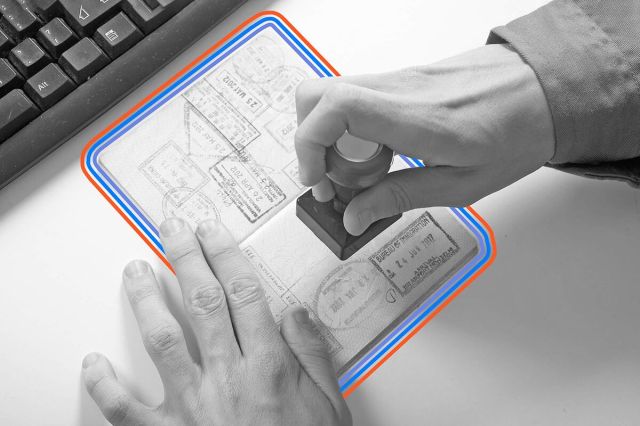
More Than 143 Million Passports Were in Circulation as of 2020
There were 143,116,633 passports in circulation in 2020, according to the U.S. Department of State. A small proportion of those were second passports, but overall that accounts for more than 40% of the U.S. population of 331 million. However, that hasn’t always been the case: In 1989, just 7,261,711 million U.S. passports existed for a population of approximately 245 million, and as recently as 20 years ago, that number still remained stubbornly below 50 million.
Despite the significant increase in passport holders, the U.S. figure still falls short of the percentage in many other countries. For example, the Australian government reported that 4,614,941 Australians held a passport in 2019, equivalent to 57% of the population. According to the 2011 census (the most recent data available) just 15% of the 63 million people living in the U.K. did not have a passport. One of them was the Queen — who doesn’t need one because it is she who issues them.
Several factors might explain the discrepancies. Thanks to the rapid growth of budget airlines, travel within Europe can be extraordinarily cheap, but a passport is needed to access those international flights. In contrast, visiting many foreign destinations from the U.S. requires a long and relatively expensive flight. The significant differences in climate, topography, and culture make international travel enticing to many foreign nationals, but in the U.S., there’s already a great deal of variety within its borders. Paid holiday entitlements also vary considerably between countries, as does the culture and tradition of gap year travel.

U.S. Passport Holders Can Travel to 186 Countries Without Having To Arrange a Visa
The strength of a nation’s passport can be measured in the number of countries its holders are entitled to enter under normal circumstances — either visa-free or by purchasing a visa on arrival (and not having to arrange one in advance). According to the Henley Passport Index, which is based on data from the International Air Transport Association, the U.S. passport currently allows access to 186 countries. That ranks No. 7 among all countries, and is on par with New Zealand, Belgium, Norway, and Switzerland.
Japan tops the 2022 chart with 193 countries, closely followed by Singapore and South Korea with 192. As countries alter their entry requirements, the rankings change; the U.S. most recently took first place in 2014.

The Cover Color Is the World’s Most Common, But It Hasn’t Always Been Blue
According to the Passport Index from Arton Capital, the world’s passports can be grouped into shades of just four colors: red, blue, green, and black. Blue, the current choice of the U.S. government, is the most popular, preferred by 83 nations. Red is second on the list with 65 countries, followed by green and black with 44 and seven countries, respectively.
Passport cover colors don’t always stay the same, either: The U.S. passport has actually been all four at some point in its history. In his book The Passport: The History of Man’s Most Travelled Document, author Martin Lloyd notes that America’s first modern-style passport, issued starting in 1926, was red. Red was replaced by green from 1941 to 1976, when today’s blue option was introduced to match the flag, in honor of the country’s bicentennial celebrations. There are a few exceptions: Diplomats use black passports, and anyone traveling without diplomatic status but who is on government business uses red documents.
More Interesting Reads

You Can’t Use Just Any Old Photograph
Passport photos have to meet a long list of conditions today, but that wasn’t always the case. In the early days of passports, there were few restrictions on the photograph you could use in a passport. People posed with family members and pets, smoked cigarettes, or played musical instruments. Today’s photos must be recent, taken in the last six months, and set against a plain white or off-white background. If you wear glasses, you must remove them unless you can prove you have a medical exemption. No filters or selfies, either.
The list doesn’t end there: Don’t even think about wearing a uniform, or camouflage gear. Ditch the hat, unless it’s worn because of your religion, and lose your headphones. Jewelry and piercings are considered acceptable, so long as they don’t obscure your facial features, as are permanent tattoos. If your physical appearance changes significantly, it’s likely you’ll need a new replacement passport.

The Artwork in the Current U.S. Passport Protects Against Forgery
A 2016 makeover of the U.S. passport moved the machine-readable chip, which contains biometric data about the holder, inside polycarbonate paper to make it more secure. The practice of adding extra pages was banned. Inks, too, got cleverer — depending on the angle you view it, the word “U.S.A.” in the current passport looks green or gold. Even the hot foil stamping on the cover is a feature that aims to make forgery trickier.
The passport’s artwork is also used to frustrate potential forgers. The current passport design, dubbed “American Icon,” features a wide range of patriotic images including the Statue of Liberty and Mount Rushmore, bison, bears, bald eagles, and longhorn cattle. The ideals and ethos of a nation are summed up through excerpts from the Declaration of Independence and rousing quotes from Martin Luther King, Jr., Anna Julia Cooper, Henry Ward Beecher, and former presidents.
For really mind-blowing passport artwork, however, take a look at some of the passports issued by the Nordic nations. Shining Norway’s passport under a UV light reveals a hidden image of the Northern Lights. Finnish passports act like flicker-books: Flip the passport pages quickly enough and the pictures create a moving image of a moose. Staying one step ahead of forgers is a constant battle, and another, more advanced U.S. passport redesign may soon be in the works.











